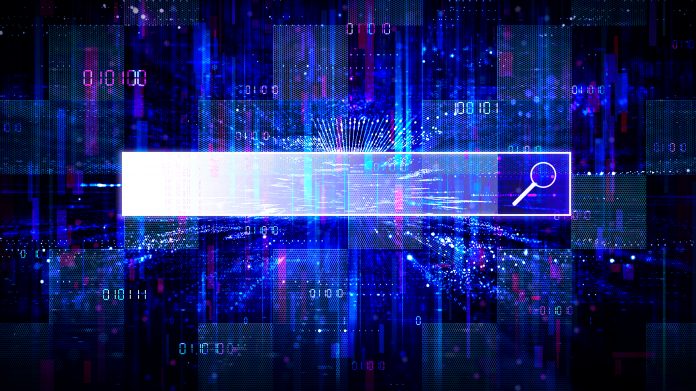The way we use computers and technology is rapidly changing, here Paul Grosvenor, Director at Optima Systems Ltd explores the search engines of the future and how AI and ML will change the way we access information
Artificial Intelligence (AI) and Machine Learning (ML) articles appear all over the press at the moment and they hint at genuinely impressive developments. However, very often, the reality is that we are still a long way from true AI and ML remains limited in its usefulness. But, there is some technology around that should make us sit up and watch.
Some of this tech has been around for a while, but now all of the various strands are being collected together to form newer, even more powerful tools. Don’t be fooled, though. Intelligence is not just a function of complexity (although sometimes it can look like it).

Much work has been done building search engines and improving how they collect their source data to respond to questions. In its more familiar forms, it isn’t intelligence as such, but it is certainly clever how so much information can be distilled and delivered and used, and it’s all free. And anyone can do it.
Using AI and ML to create graphical images
Take a look at a product such as midjourney.com. By entering a simple text string describing the image you are trying to create the system will go away, analyse the string, and then once it has worked out what you are directing (the clever bit), it creates an image for you. The system was trained on a vast number of images to enable it to learn what it should or could draw.
For example, you might type “a Prismatic Butterfly”. If you did you might then receive an image not dissimilar to the one shown here. You could add further modifiers such as “photorealistic” or “in the style of Monet”. All of these attributes go together to define and refine the image.
Then again you might get something slightly different. The image is determined by the data available at the time and so can change. It like many similar products are fascinating to use. The result is never known until the final stages of production and simple textural changes can make a big difference to the result.
Google Lens, future of language translation and so much more
Another clever piece of tech which has been around for some time in one form or another is Google Lens. What makes it stand out from many language translation Apps is that it works with images or your phone camera in real time. Stop and think about that for a moment.
To work, the App has to interrogate the image (or video stream), identify which elements are text, determine the language, convert to my language, and then write back the converted text into the video stream. All in real-time and all for free.
This is certainly not Machine Learning and not really AI either but it is a good example of how different pieces of code can be brought together to create new applications. It is certainly complex but is constrained by the rules of the application it cannot step outside of that domain.
One might argue that there was ‘learning’ going on during its development and possibly the code alters parts of itself to reflect changes in use. In my past, we would have called this refactoring (or simply bug fixing for the obvious errors).
ChatGPT and intuitive AI
Now, this is interesting and generating a lot of interest in the computing industry and beyond. ChatGPT from openai.com allows us to enter a text prompt from which we receive a human-readable and understandable response.
ChatGPT differs from, say, a Google search in that it is designed to return a single ‘best’ answer to the prompt rather than the many pages of hits we are currently used to seeing. Many search engine vendors are sitting up and looking carefully at the potential of this technology. Not just because it is rather good but because they can see it taking a chunk of their market away.
So how would ChatGPT describe itself?
When asked, the response is as follows:
- ChatGPT is a large-scale language model developed by OpenAI that has been trained on vast amounts of text data from the internet. It uses a deep learning algorithm called a transformer, which allows it to generate human-like responses to text-based prompts.
- ChatGPT is particularly useful for conversational AI applications, as it has been fine-tuned to generate responses to a user’s text-based prompts or questions. It can understand and generate responses to a wide range of topics, and its responses can be remarkably human-like.
- ChatGPT has been used in a variety of applications, including customer service, chatbots, and language translation. It has also been used in research applications to develop tools for natural language understanding and dialogue systems.
- Overall, ChatGPT represents a major breakthrough in the field of natural language processing and has the potential to revolutionize the way we interact with computers and machines.
All things considered, the response is not bad at all. It is certainly readable and makes sense, but like using GPS, having a little local knowledge is often a very good thing.
How will AI and ML change how we interact with computers?
AI and ML are rapidly transforming the way we use computers and technology in many different ways. Here are a few examples of how they are expected to change the way we interact with computers in the next few years:
- Enhanced personalization:
- AI and ML can enable computers to learn more about our preferences, behaviours, and interests, which will allow for more personalized experiences in everything from social media to e-commerce.
- Improved natural language processing:
- With the development of advanced NLP (Natural Language Processing) systems, users will be able to interact with computers in more natural and intuitive ways, without having to use a keyboard or mouse.
- Increased automation:
- AI and ML can automate tasks that are repetitive and time-consuming, which will enable us to focus on more complex and creative tasks.
- Improved decision-making:
- With the help of AI and ML, we can make more informed decisions by analysing large amounts of data and identifying patterns and trends that would be difficult for humans to recognize.
- Advanced robotics:
- As AI and ML technologies continue to advance, we can expect to see more advanced robots that can perform tasks in a variety of industries, from manufacturing to healthcare.
Overall, AI and ML will continue to transform our use of computers and technology in many different ways, making our lives more convenient, efficient, and personalized.
All trademarks acknowledged

This work is licensed under Creative Commons Attribution-NonCommercial-NoDerivatives 4.0 International.











